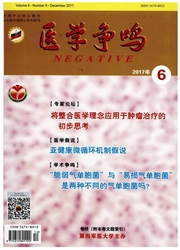

 中文摘要:
中文摘要:
淋巴瘤样丘疹病是一种相对常见的低度恶性皮肤淋巴瘤,与原发性皮肤间变性大细胞淋巴瘤同属于皮肤CD30阳性淋巴细胞增生性疾病。其分型主要有A、B、C、D、E和F型,还有一些特殊的临床及病理分型。是我们的分型越多就越困惑,因为同样的临床表现与预后,却有着如此截然不同的组织病理学特点。针对淋巴瘤样丘疹病的治疗方法众多,但至今没有证据表明任何一种治疗方案能够减少复发的频率和数量,而且往任何治疗中断后皮损都必然会复发。更重要的是,没有一种治疗能够有效地预防继发淋巴瘤的发生。本文通过回顾淋巴瘤样丘疹病的文献归纳总结出目前最新的组织病理学分类,及对临床预后具有影响的分子和基因,以及可以用来靶向治疗的分子。根据整合医学的思想,制定出一套在现有的技术水平下可以实现的、合理的且易于操作的诊治流程。
 英文摘要:
英文摘要:
Lymphomatoid papulosis is a relatively common low-grade malignant cutaneous lymphoma. Together with primary cutaneous anaplastic large cell lymphoma, they form the disease spectrum named CD30-positive lymphoproliferative disorders. The subtypes include type A, B, C, D, E and F basically, and some special clinical and histopathological variants. With its increasing subtypes, we are confused more and more. They might present the same clinical manifestations and prognosis while having the distinctly different histopathological features. Although many kinds of therapies for lymphomatoid papulosis are available, there are no data to support the efficacy of any given treatment scheme in diminishing the number and frequency of recurrences, and cutaneous relapses after discontinuation of any type of treatment are the rule. Even more importantly, there is no therapy that has been demonstrated to have a preventive effect on the development of a secondary lymphoma. In this article, we reviewed the research history of lymphomatoid papulosis, analyzed the basic subtypes of lymphomatoid papulosis, and introduced the molecules and genes which could affect the prognosis of disease and be useful for the targeted therapy. Wc formulated a diagnosis and therapy guide which is more reasonable and easier to operate from a perspective of holistic integrative medicine.
 同期刊论文项目
同期刊论文项目
 同项目期刊论文
同项目期刊论文
 期刊信息
期刊信息
